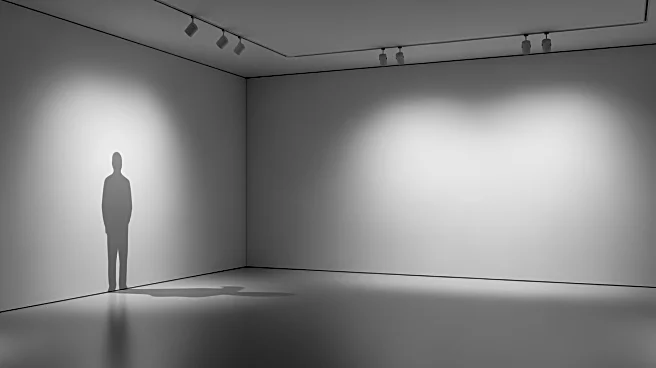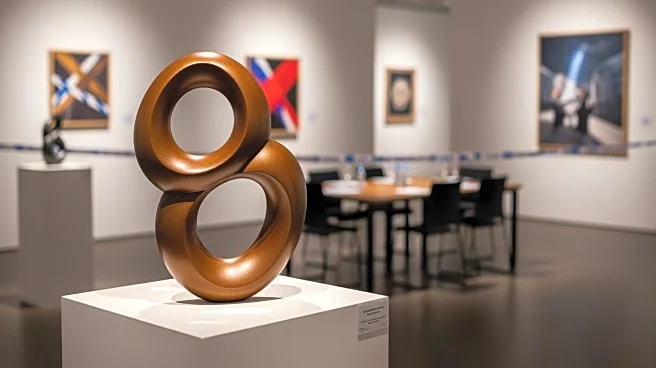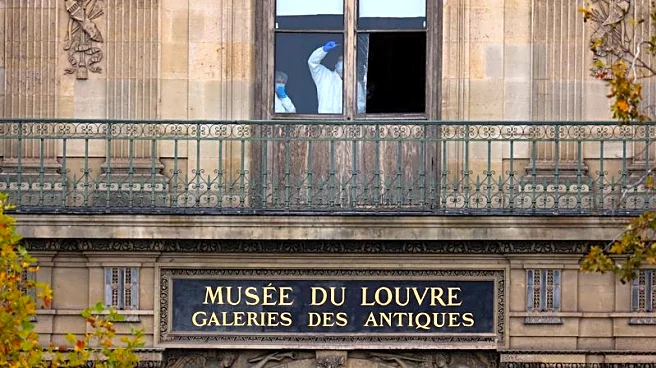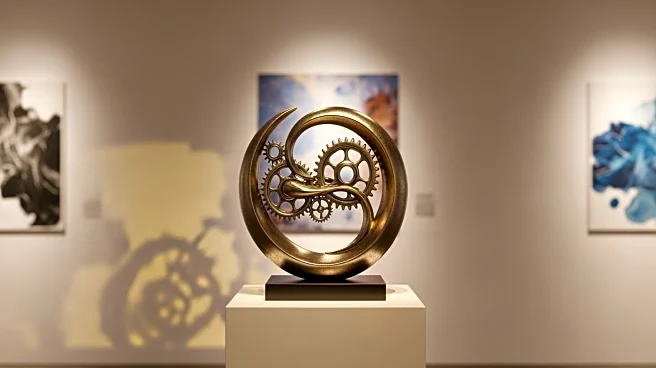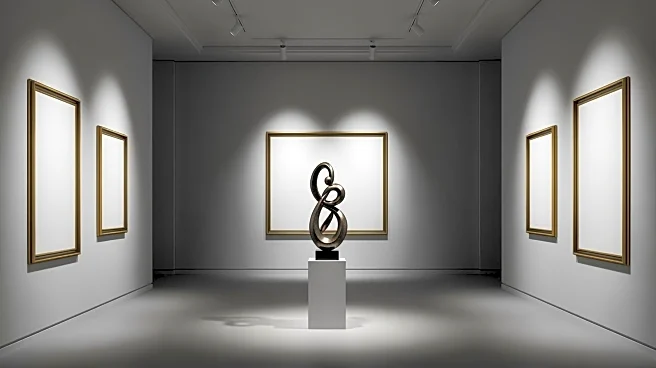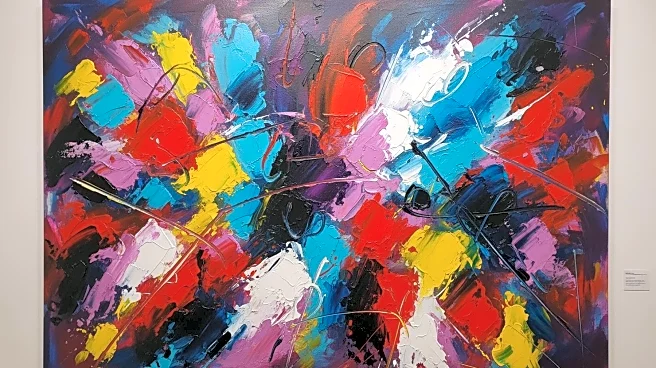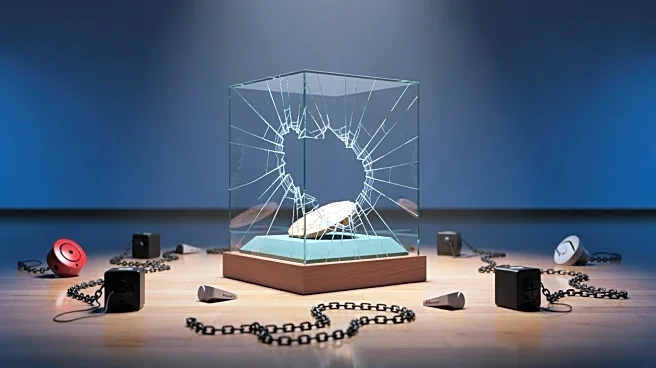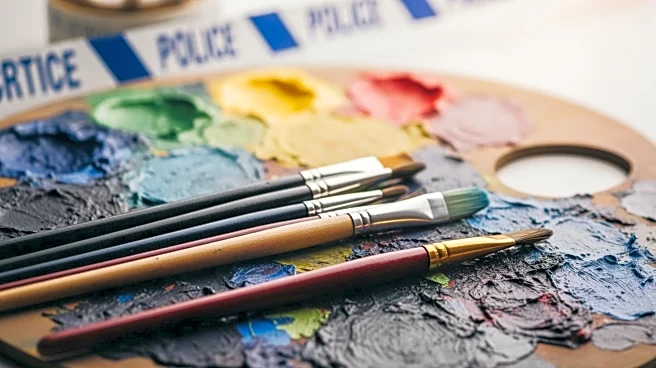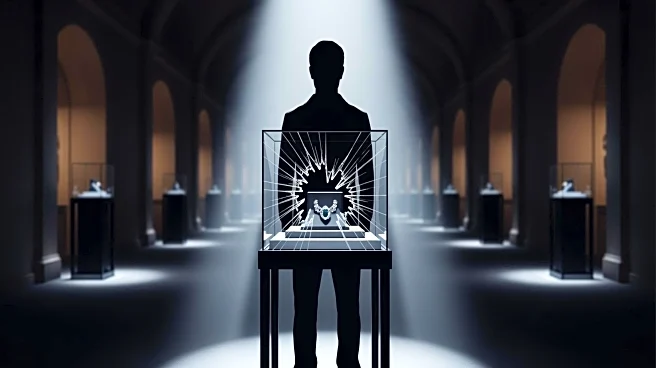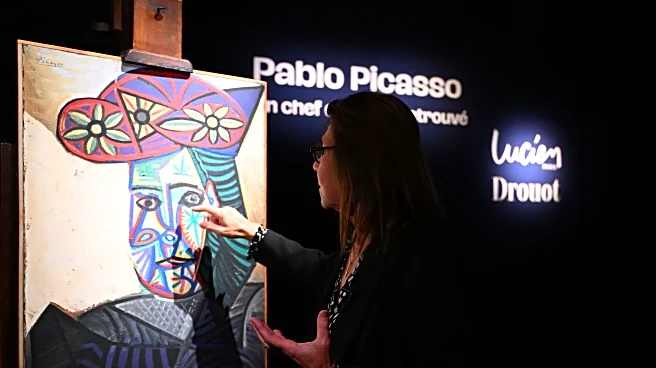What's Happening?
The Palais de Tokyo in Paris has removed an artwork by American artist Cameron Rowland from its facade, citing legal concerns. The artwork, titled 'Replacement,' featured the flag of Martinique, an overseas French department, and was part of an exhibition
exploring transatlantic cultural exchange and politics. The museum determined that the artwork could be considered illegal, leading to its removal from the exhibition. The flag, adopted officially in 2023, symbolizes Martinique's historical struggle for independence from French rule. The removal has sparked discussions about the legal and cultural implications of displaying politically charged artworks in public spaces.
Why It's Important?
The removal of Cameron Rowland's artwork from the Palais de Tokyo highlights the complex intersection of art, politics, and legality. It underscores the challenges faced by artists and institutions when addressing sensitive political issues through art. This incident may influence future decisions by museums and galleries regarding the display of politically charged works, potentially leading to increased scrutiny and legal considerations. The situation also raises questions about freedom of expression and the role of art in political discourse, particularly in contexts where historical and cultural tensions are present.
What's Next?
The removal of the artwork may prompt further discussions and debates within the art community about the boundaries of artistic expression and the responsibilities of cultural institutions. Stakeholders such as artists, curators, and legal experts may engage in dialogue to address the implications of this decision and explore ways to navigate similar challenges in the future. The incident could also lead to changes in museum policies regarding the display of politically sensitive artworks.
Beyond the Headlines
This development highlights the ongoing struggle for independence and recognition faced by territories like Martinique. It brings attention to the broader issues of colonialism, cultural identity, and political autonomy. The removal of the artwork serves as a reminder of the power of art to provoke thought and challenge established narratives, while also illustrating the potential risks and consequences of engaging with contentious topics.
